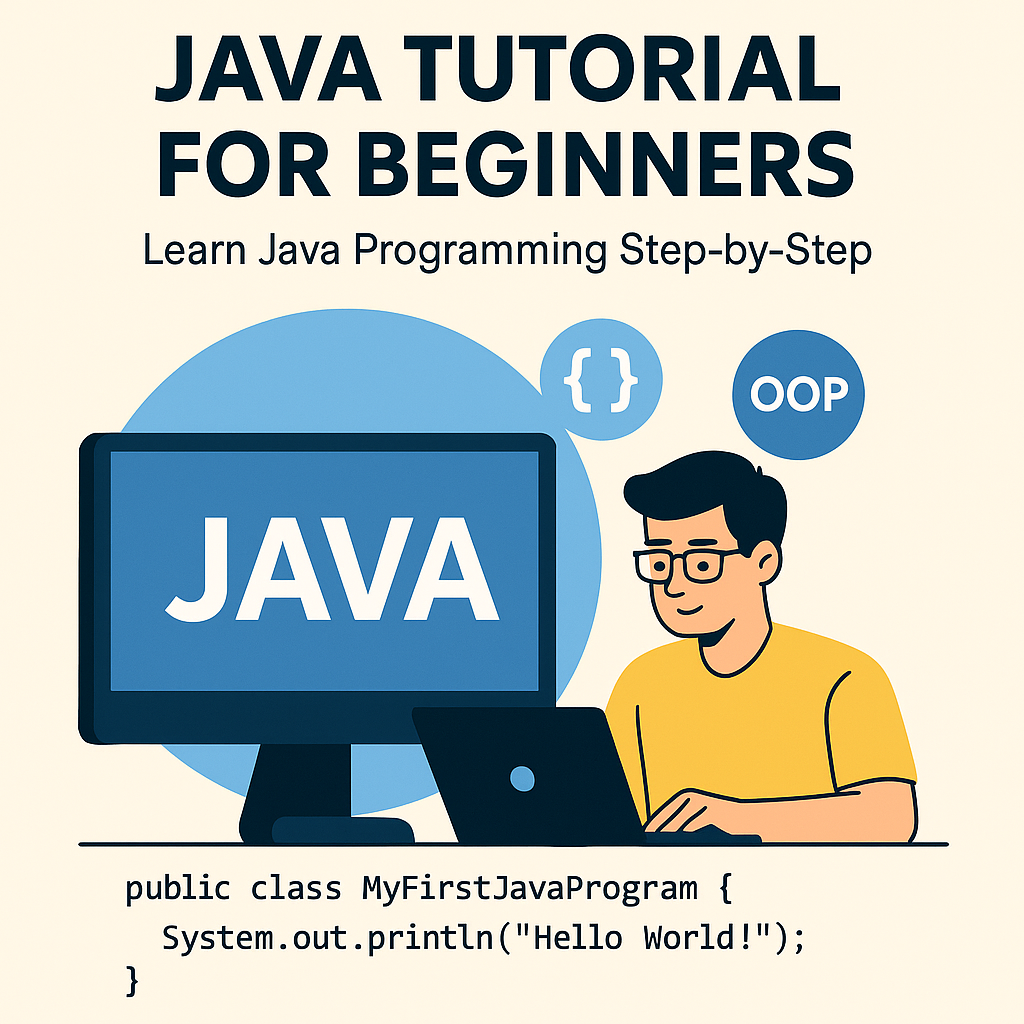Introduction to JavaFX for GUI Applications
JavaFX GUI application example with modern UI controls, stage, scene, and buttons
Introduction to JavaFX for GUI Applications
Introduction
JavaFX is a modern Java framework designed to create rich client GUI (Graphical User Interface) applications. It provides a powerful set of tools, libraries, and APIs for building visually appealing desktop applications that run seamlessly across platforms. JavaFX is the successor of Swing and is now widely used for building data-driven, interactive, and cross-platform applications.

Key Features of JavaFX
🎨 Rich UI Controls – Provides built-in controls like buttons, tables, lists, and charts.
🎥 Multimedia Support – Supports audio, video, and 2D/3D graphics.
🖼️ FXML Support – XML-based UI design for separation of design and logic.
📱 Cross-Platform – Works across Windows, macOS, and Linux.
⚡ CSS Styling – Apply styles using CSS for a modern UI look.
🔗 Integration with Java APIs – Works seamlessly with existing Java libraries.
🔄 Scene Graph Architecture – Flexible structure to represent UI components.
JavaFX Architecture
The JavaFX architecture is based on the Scene Graph model:
Stage – The top-level container representing a window.
Scene – Holds the UI elements displayed inside the stage.
Nodes – Visual elements like buttons, labels, text fields, etc.
FXML – Allows separation of UI design from business logic.
Media & WebView – Supports multimedia and embedding web content.
Advantages of JavaFX
✅ Provides a modern alternative to Swing.
✅ Built-in support for 2D and 3D graphics.
✅ Easy styling with CSS and FXML.
✅ Supports responsive and scalable applications.
✅ Strong community and open-source support.
✅ Rich multimedia integration.
JavaFX Example: Simple Application
import javafx.application.Application;
import javafx.scene.Scene;
import javafx.scene.control.Button;
import javafx.scene.layout.StackPane;
import javafx.stage.Stage;
public class HelloJavaFX extends Application {
@Override
public void start(Stage primaryStage) {
Button btn = new Button("Say Hello JavaFX");
btn.setOnAction(e -> System.out.println("Hello JavaFX!"));
StackPane root = new StackPane();
root.getChildren().add(btn);
Scene scene = new Scene(root, 300, 200);
primaryStage.setTitle("JavaFX Introduction");
primaryStage.setScene(scene);
primaryStage.show();
}
public static void main(String[] args) {
launch(args);
}
}
JavaFX vs Swing
| Feature | JavaFX | Swing |
|---|---|---|
| UI Look & Feel | Modern (CSS-based) | Outdated |
| Graphics | 2D & 3D support | Limited |
| Multimedia | Built-in support | Requires external libraries |
| Layout | Scene Graph | Container-based |
| Ease of Use | Easier with FXML | Verbose code |
Conclusion
The JavaFX Framework is a robust solution for building modern, scalable, and visually appealing desktop GUI applications in Java. With features like FXML, CSS styling, and multimedia integration, JavaFX empowers developers to design engaging user interfaces with ease. As the official successor to Swing, JavaFX continues to evolve and remains the go-to choice for Java-based desktop application development.
🔑 Target SEO Keywords:
JavaFX, JavaFX tutorial, JavaFX introduction, GUI applications in Java, JavaFX features, JavaFX architecture, JavaFX vs Swing, JavaFX examples
Table of content
- Introduction to Java
- Java Basics
- Object-Oriented Programming (OOP) in Java
- Exception Handling in Java
- Java Collections Framework
- File Handling in Java
- Multithreading in Java
- Networking in Java
- Java Database Connectivity (JDBC)
- Java Frameworks and Technologies
- Java Interview Preparation
- Additional Java Resources